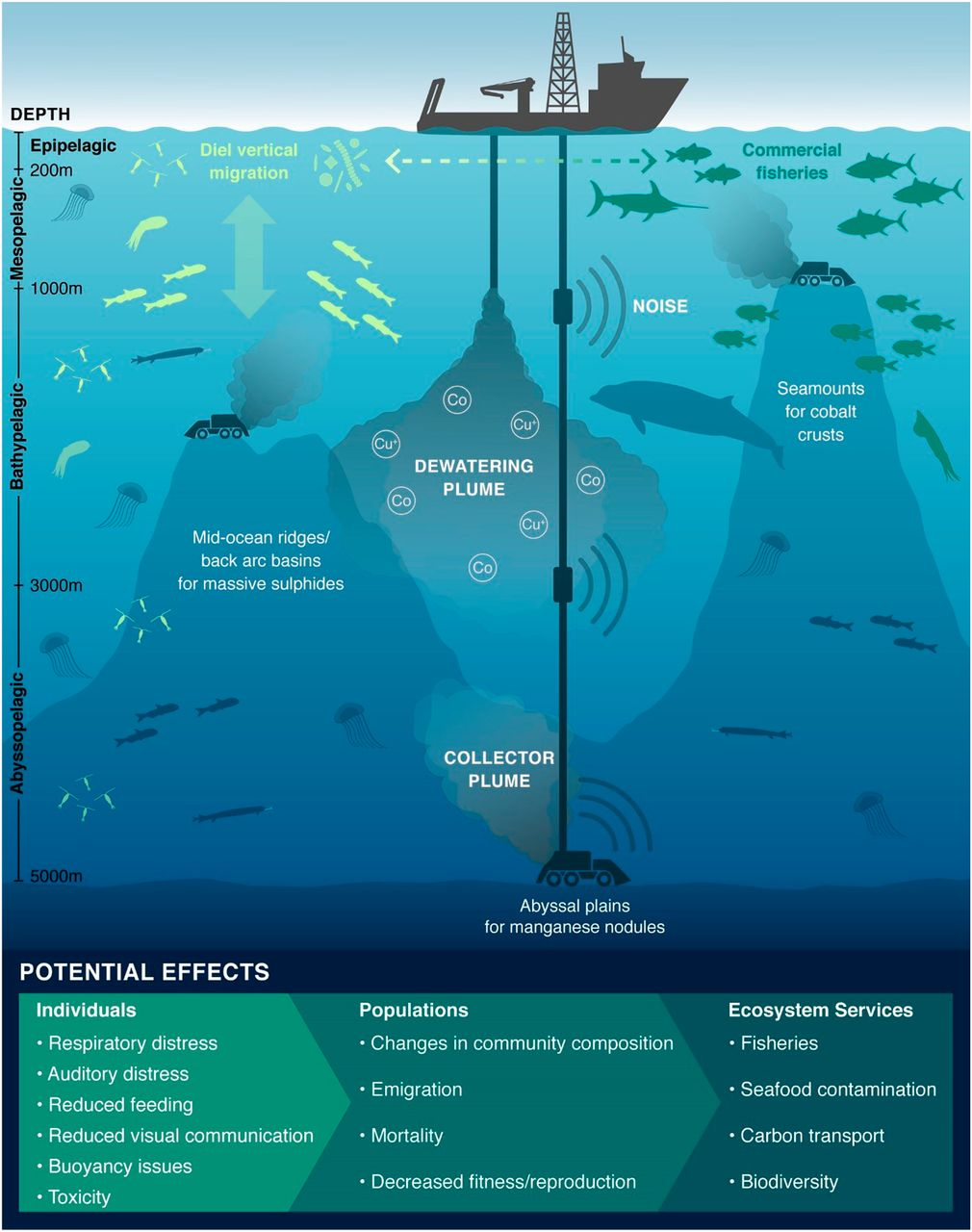Important Facts For Prelims
Discovery of Dark Oxygen
- 30 Jul 2024
- 5 min read
Why in News?
Recently, scientists reported an unknown process is producing oxygen deep in the world’s oceans, where photosynthesis can’t occur due to the lack of sunlight.
- This discovery is significant because oxygen supports marine life and suggests that there may be previously unknown ecosystems.
What is Dark Oxygen?
- About:
- Scientists observed an unexpected increase in oxygen concentration in some areas of the abyssal zone (where sunlight is extremely low and insufficient for photosynthesis).
- Researchers noted that this finding represents a new source of oxygen where photosynthesis does not occur, and termed it as ‘dark oxygen’.
- Possible Cause of Generation of Dark Oxygen:
- Typically oxygen is provided by the ‘Great Conveyor Belt’, a global circulation system which should decrease without local production, as small animals consume it.
- One hypothesis for oxygen production is that polymetallic nodules are transporting electric charges that split water molecules, releasing oxygen.
- Polymetallic nodules are lumps of iron, manganese hydroxides, and rock found on the ocean floor.
- However, the exact energy source for the nodules’ ability to produce oxygen remains unclear.
- Place of Study:
- The study was conducted in the Clarion-Clipperton Zone Region off Mexico's west coast.
- The Zone is noted for having the highest concentration of polymetallic nodules in the world.
- The study was conducted in the Clarion-Clipperton Zone Region off Mexico's west coast.
What is Deep-Sea Mining?
- About:
- Deep-sea mining involves extracting mineral deposits and metals from the ocean floor. There are three main types of Deep-sea mining.
- Removing polymetallic nodules rich in deposits from the seabed.
- Mining massive deposits of seafloor sulfides.
- Extracting cobalt crusts from rock formations.
- These nodules, deposits, and crusts contain valuable materials like nickel, rare earth elements, and cobalt, which are essential for batteries, renewable energy technologies, and everyday devices such as cell phones and computers.
- The deep-sea mining is anticipated to become a major marine resource extraction activity in the coming decades due to availability of polymetallic nodules.
- Deep-sea mining involves extracting mineral deposits and metals from the ocean floor. There are three main types of Deep-sea mining.
- Environmental Concerns:
- The discovery of ‘dark oxygen’ raises concerns about potential damage to ecosystems that rely on this oxygen source. Experts worry that deep-sea mining (that removes polymetallic nodules) could be harmful to these marine environments.
- In November 2023, a study indicated that deep-sea mining could harm deep-sea jellyfish (by creating mud plumes in ocean water which interfere with the nutrient and reproductive cycle of marine species).
- Limited scientific knowledge of abyssal zone ecosystems compared to those aboveground, may complicate efforts to gauge the potential impact of deep-sea mining on these ecosystems and their role in global climate processes.
- Indian Context:
- India intends to apply for licenses to explore deep-sea minerals in the Pacific Ocean.
- Also, India was the first country to receive the status of a ‘Pioneer Investor’ in 1987 and was given an area of about 1.5 lakh sq. km in the Central Indian Ocean Basin (CIOB) for nodule exploration.
- India’s exclusive rights to explore polymetallic nodules from seabed in the Central Indian Ocean Basin was extended in 2017 for five years.
- India in 2024, applied for Rights to Explore the Indian Ocean Seabed beyond its jurisdiction, including Cobalt-Rich Afanasy Nikitin Seamount (AN Seamount)
- India’s Ministry of Earth Sciences is developing a submersible vehicle (Samudrayaan Misssion) as part of its ‘Deep Ocean Mission’ to search for and mine similar resources in the Indian Ocean.
- India intends to apply for licenses to explore deep-sea minerals in the Pacific Ocean.
UPSC Civil Services Examination, Previous Year Question (PYQ)
Prelims:
Q. Consider the following statements:
1. The Global Ocean Commission grants licences for seabed exploration and mining in international waters.
2. India has received licences for seabed mineral exploration in international waters.
3. ‘Rare earth minerals’ are present on the seafloor in international waters.
Which of the statements given above are correct?
(a) 1 and 2 only
(b) 2 and 3 only
(c) 1 and 3 only
(d) 1, 2 and 3
Ans: (b)






-min.jpg)